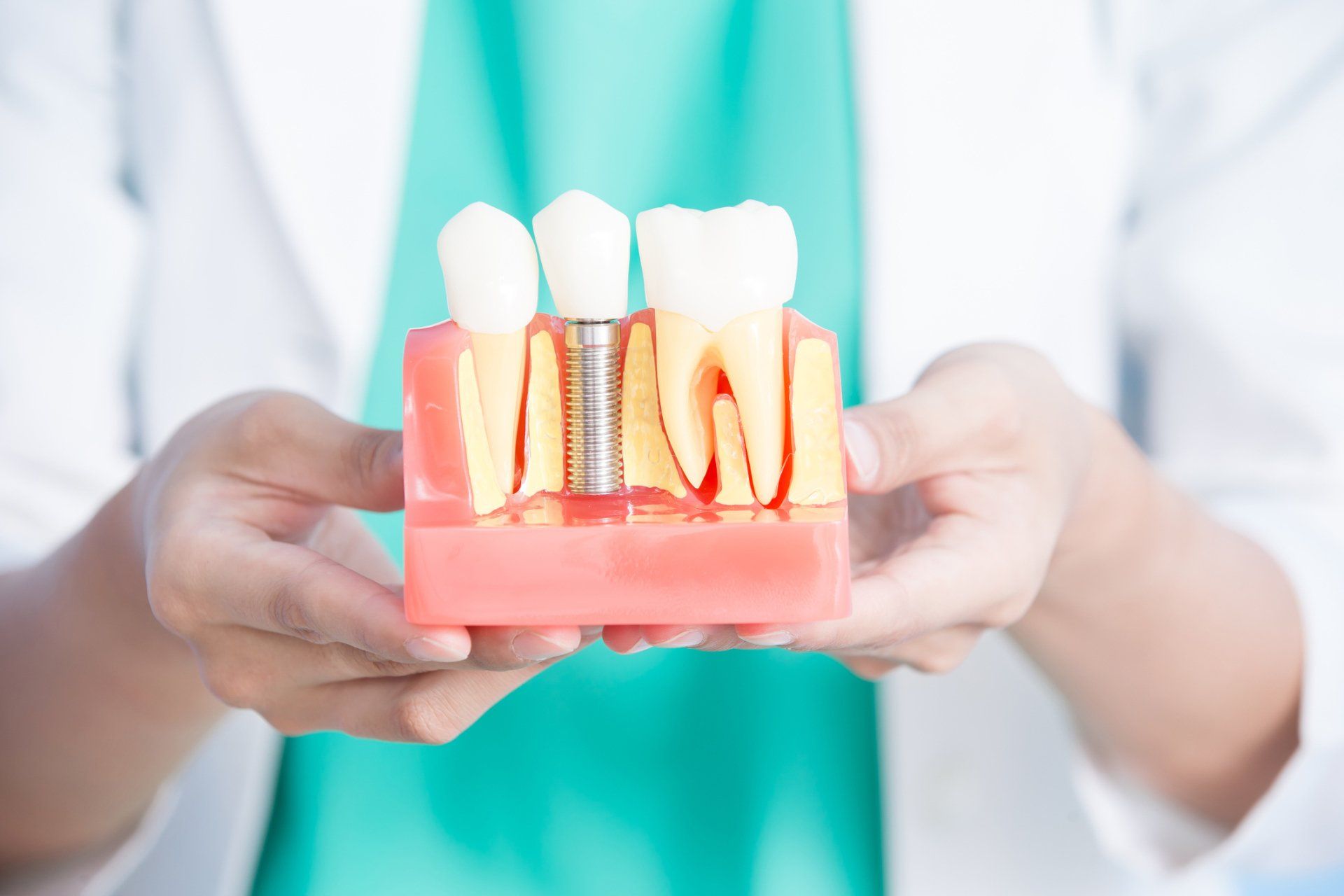Although many people assume that dental implants are a modern invention, the basic scientific principles that paved the way for dental implants were actually discovered in the early 1950's by a Swedish orthopedic surgeon - completely on accident.
While studying blood flow and healing in rabbits,
Dr. Per-Ingvar Brånemark realized that titanium rods had merged with the natural bone tissue of the animals, and the concept of applying the technology to dental implants was born in the surgeon's mind.
Although Dr. Brånemark was installing dental implants in patients as early as the mid-sixties, the technology of dental implant surgery has continued to improve over the years. Here are three ways dental implants have evolved since their invention.
Originally dental crowns were crafted out of materials like wood and animal bone, so dental implants haven't always looked completely realistic. However, with the creation of stronger composite resins and a better understanding of tooth color and opacity, modern dental implants can either be created to blend in seamlessly with your existing teeth or to transform your smile altogether.
Additionally, since dental implants are anchored into your natural bone tissue just like your natural teeth, patients don't have to worry about faux gum tissue or a gum line that looks strange. Instead, modern dental implants are completely customized based on your dental goals, tooth orientation and periodontal arch, so there is nothing to worry about.
In fact, dental implants can even contain some of the color, shape and texture characteristics of the rest of your teeth. For example, dental lab technicians can add things like mottling, tints and even minor chips to help the implants to look like they have always been in your mouth.
Over the years researchers have discovered a lot about teeth, including how teeth move when biting, and the initial growth stages of teeth. Because your natural teeth flex slightly, modern dental implants are designed to do the same thing, which creates implants that are just as strong as your original teeth.
Additionally, since dental implants are only as strong and stable as their anchors, scientists have studied ways to improve the attachment to the bone tissue. Because natural bone tissue is slightly rough, dental researchers transitioned from placing perfectly smooth dental implant posts to inserting posts with a texture that mimics bone.
This
rough surface increases surface area, helping the implant to fuse with the bone tissue faster and stronger than in previous versions.
Another big step forward in the technological advancement of dental implants was the invention of CAD and CAM technology as well as cone beam imaging. Using these powerful technologies, dentists and periodontists can create highly accurate three-dimensional models of teeth, which allows them to plan surgeries carefully and to anticipate issues with a patient's anatomy.
Additionally, this technology gives patients the chance to see what their smile would look like with the addition of dental implants before the surgery is scheduled - giving people peace of mind and an end goal in sight. Modern imaging technologies also help dentists reduce recovery timeframes and improve patient comfort since the surgery can be planned effectively and performed accurately the first time.
Are you ready to learn more about modern dental implants? The dental specialists at
Premier Dentures and Implants understand how life-changing dental implants can be, which is why they offer free consultations to answer all of your questions. After we evaluate your medical and dental history to determine if you are a candidate for the procedure, we'll talk with you about how implants could improve your smile.












